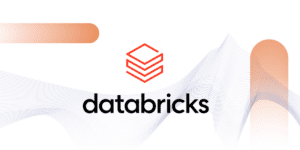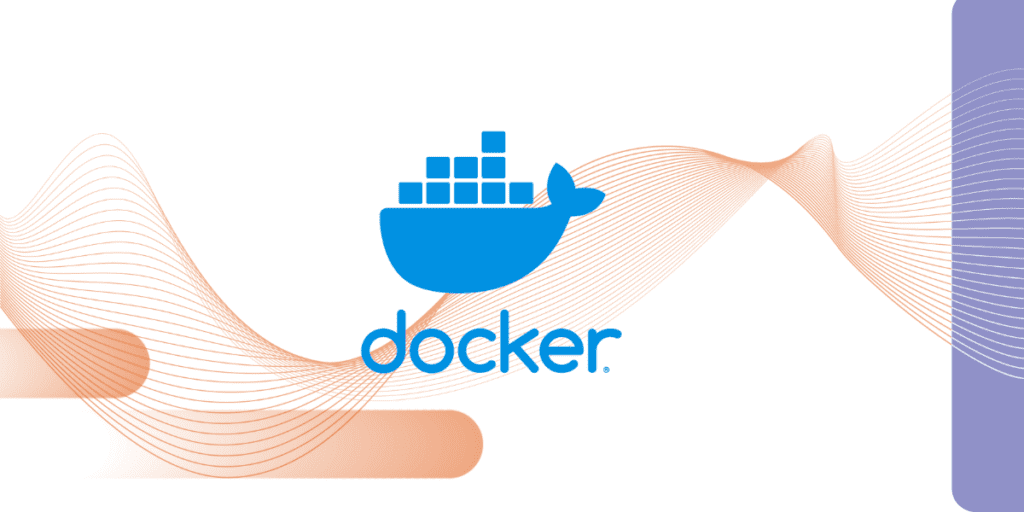

AWS Cloud Architect

Within the framework of security in container, the build phase is of vital importance as we need to select the base image on which applications will run. Not having automatic mechanisms for vulnerability scanning can lead to production environments with insecure applications with the risks that involves.
In this article we will cover vulnerability scanning using Aqua Security’s Trivy solution, but before we begin, we need to explain what the basis is for these types of solutions for identifying vulnerabilities in Docker images.
Introduction to CVE (Common Vulnerabilities and Exposures)

CVE is a list of information maintained by MITRE Corporation which is aimed at centralising the records of known security vulnerabilities, where each reference has a CVE-ID number, description of the vulnerability, which versions of the software are affected, possible fix for the flaw (if any) or how to configure to mitigate the vulnerability and references to publications or posts in forums or blogs where the vulnerability has been made public or its exploitation is demonstrated.
The CVE-ID provides a standard naming convention for uniquely identifying a vulnerability. They are classified into 5 typologies, which we will look at in the Interpreting the analysis section. These types are assigned based on different metrics (if you are curious, see CVSS Calculator v3).
CVE has become the standard for vulnerability recording, so it is used by the great majority of technology companies and individuals.
There are various channels for keeping informed of all the news related to vulnerabilities: official blog, Twitter, cvelist on GitHub and LinkedIn.
If you want more detailed information about a vulnerability, you can also consult the NIST website, specifically the NVD (National Vulnerability Database).
We invite you to search for one of the following critical vulnerabilities. It is quite possible that they have affected you directly or indirectly. We should forewarn you that they have been among the most discussed
If you detect a vulnerability, we encourage you to register it using the form below.
Trivy is an open source tool focused on detecting vulnerabilities in OS-level packages and dependency files for various languages:
Aqua Security, a company specialising in development of security solutions, acquired Trivy in 2019. Together with a substantial number of collaborators, they are responsible for developing and maintaining it.
Trivy has installers for most Linux and MacOS systems. For our tests, we will use the generic installer:
curl -sfL https://raw.githubusercontent.com/aquasecurity/trivy/master/contrib/install.sh | sudo sh -s -- -b /usr/local/bin If we do not want to persist the binary on our system, we have a Docker image:
docker run --rm -v /var/run/docker.sock:/var/run/docker.sock -v /tmp/trivycache:/root/.cache/ aquasec/trivy python:3.4-alpine Trivy has installers for most Linux and MacOS systems. For our tests, we will use the generic installer:
#!/bin/bash
docker build -t cloud-practice/alpine:latest -<<EOF
FROM alpine:latest
RUN echo "hello world"
EOF
trivy image cloud-practice/alpine:latest #!/bin/bash
trivy image python:3.4-alpine #!/bin/bash
git clone https://github.com/knqyf263/trivy-ci-test
trivy fs trivy-ci-test #!/bin/bash
trivy repo https://github.com/knqyf263/trivy-ci-test --cache-dir <dir> parameter:#!/bin/bash trivy –cache-dir .cache/trivy image python:3.4-alpine3.9 #!/bin/bash
trivy image --severity HIGH,CRITICAL ruby:2.4.0 #!/bin/bash
trivy image --ignore-unfixed ruby:2.4.0 #!/bin/bash
trivy image --exit-code 0 --severity MEDIUM,HIGH ruby:2.4.0
trivy image --exit-code 1 --severity CRITICAL ruby:2.4.0 #!/bin/bash
cat .trivyignore
# Accept the risk
CVE-2018-14618
# No impact in our settings
CVE-2019-1543 #!/bin/bash
trivy image -f json -o results.json golang:1.12-alpine
cat results.json | jq #!/bin/bash
wget https://raw.githubusercontent.com/aquasecurity/trivy/master/contrib/sarif.tpl
trivy image --format template --template "@sarif.tpl" -o report-golang.sarif golang:1.12-alpine
cat report-golang.sarif VS Code has the sarif-viewer extension for viewing vulnerabilities.
Trivy has templates for the leading CI/CD solutions:
#!/bin/bash
$ cat .gitlab-ci.yml
stages:
- test
trivy:
stage: test
image: docker:stable-git
before_script:
- docker build -t trivy-ci-test:${CI_COMMIT_REF_NAME} .
- export VERSION=$(curl --silent "https://api.github.com/repos/aquasecurity/trivy/releases/latest" | grep '"tag_name":' | sed -E 's/.*"v([^"]+)".*/\1/')
- wget https://github.com/aquasecurity/trivy/releases/download/v${VERSION}/trivy_${VERSION}_Linux-64bit.tar.gz
- tar zxvf trivy_${VERSION}_Linux-64bit.tar.gz
variables:
DOCKER_DRIVER: overlay2
allow_failure: true
services:
- docker:stable-dind
script:
- ./trivy --exit-code 0 --severity HIGH --no-progress --auto-refresh trivy-ci-test:${CI_COMMIT_REF_NAME}
- ./trivy --exit-code 1 --severity CRITICAL --no-progress --auto-refresh trivy-ci-test:${CI_COMMIT_REF_NAME} #!/bin/bash
trivy image httpd:2.2-alpine
2020-10-24T09:46:43.186+0200 INFO Need to update DB
2020-10-24T09:46:43.186+0200 INFO Downloading DB...
18.63 MiB / 18.63 MiB [---------------------------------------------------------] 100.00% 8.78 MiB p/s 3s
2020-10-24T09:47:08.571+0200 INFO Detecting Alpine vulnerabilities...
2020-10-24T09:47:08.573+0200 WARN This OS version is no longer supported by the distribution: alpine 3.4.6
2020-10-24T09:47:08.573+0200 WARN The vulnerability detection may be insufficient because security updates are not provided
httpd:2.2-alpine (alpine 3.4.6)
===============================
Total: 32 (UNKNOWN: 0, LOW: 0, MEDIUM: 15, HIGH: 14, CRITICAL: 3)
+-----------------------+------------------+----------+-------------------+------------------+--------------------------------+
| LIBRARY | VULNERABILITY ID | SEVERITY | INSTALLED VERSION | FIXED VERSION | TITLE |
+-----------------------+------------------+----------+-------------------+------------------+--------------------------------+
| libcrypto1.0 | CVE-2018-0732 | HIGH | 1.0.2n-r0 | 1.0.2o-r1 | openssl: Malicious server can |
| | | | | | send large prime to client |
| | | | | | during DH(E) TLS... |
+-----------------------+------------------+----------+-------------------+------------------+--------------------------------+
| postgresql-dev | CVE-2018-1115 | CRITICAL | 9.5.10-r0 | 9.5.13-r0 | postgresql: Too-permissive |
| | | | | | access control list on |
| | | | | | function pg_logfile_rotate() |
+-----------------------+------------------+----------+-------------------+------------------+--------------------------------+
| libssh2-1 | CVE-2019-17498 | LOW | 1.8.0-2.1 | | libssh2: integer overflow in |
| | | | | | SSH_MSG_DISCONNECT logic in |
| | | | | | packet.c |
+-----------------------+------------------+----------+-------------------+------------------+--------------------------------+ Now you know how to interpret at the analysis information at a high level. So, what actions should you take? We give you some pointers in the Recommendations section.
This section describes some of the most important aspects within the scope of vulnerabilities in containers:
REPOSITORY TAG IMAGE ID CREATED SIZE
alpine latest 961769676411 4 weeks ago 5.58MB
ubuntu latest 2ca708c1c9cc 2 days ago 64.2MB
debian latest c2c03a296d23 9 days ago 114MB
centos latest 67fa590cfc1c 4 weeks ago 202MB If for a dependencies reason, you cannot customise an Alpine base image, look for slim-type images from trusted software vendors. Apart from the security component, people who share a network with you will appreciate not having to download 1 GB images.
Image published in 11/2018
httpd:2.2-alpine (alpine 3.4.6)
Total: 32 (UNKNOWN: 0, LOW: 0, MEDIUM: 15, **HIGH: 14, CRITICAL: 3**) Image published in 01/2020
httpd:alpine (alpine 3.12.1)
Total: 0 (UNKNOWN: 0, LOW: 0, MEDIUM: 0, **HIGH: 0, CRITICAL: 0**) As you can see, if a development was completed in 2018 and no maintenance was performed, you could be exposing a relatively vulnerable Apache. This is not an issue resulting from the use of containers. However, because of the versatility Docker provides for testing new product versions, we now have no excuse.
Latest Apache image (Alpine base 3.12)
httpd:alpine (alpine 3.12.1)
Total: 0 (UNKNOWN: 0, LOW: 0, MEDIUM: 0, HIGH: 0, CRITICAL: 0) Latest Apache image (Debian base 10.6)
httpd:latest (debian 10.6)
Total: 119 (UNKNOWN: 0, LOW: 87, MEDIUM: 10, HIGH: 22, CRITICAL: 0) We are using the same version of Apache (2.4.46) in both cases, the difference is in the number of critical vulnerabilities.
Does this mean that the Debian base 10 image makes the application running on that system vulnerable? It may or may not be. You need to assess whether the vulnerabilities could compromise your application. The recommendation is to use the Alpine image.
My name is Ángel Maroco and I have been working in the IT sector for over a decade. I started my career in web development and then moved on for a significant period to IT platforms in banking environments and have been working on designing solutions in AWS environments for the last 5 years.
I now combine my role as an architect with being head of /bluetab Cloud Practice, with the mission of fostering Cloud culture within the company.
SOLUTIONS, WE ARE EXPERTS
You may be interested in